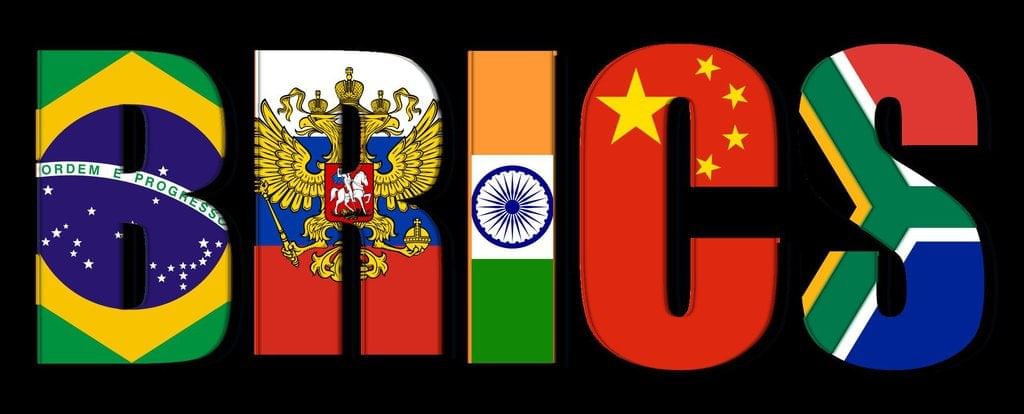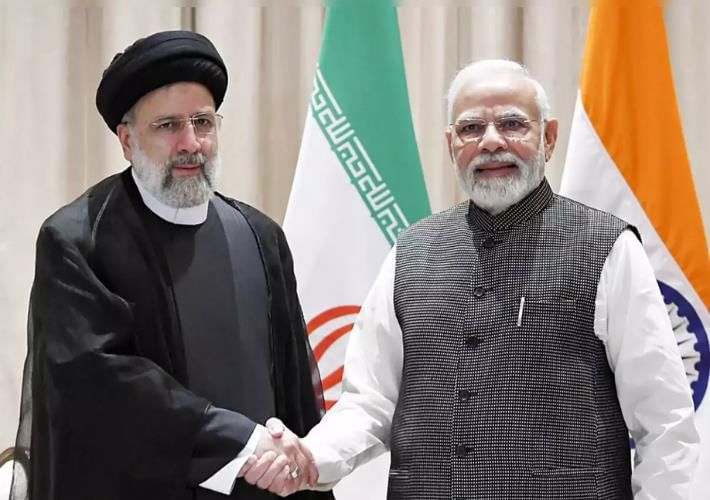The Hindu Editorial Analysis- 4th November 2024 | Current Affairs & Hindu Analysis: Daily, Weekly & Monthly - UPSC PDF Download

The BRICS summit boost to India-Iran ties
Why in News?
At the 16th BRICS Summit hosted by Russia in Kazan (October 22-24, 2024), there were a few meetings on the sidelines which created a buzz. One such meeting was between India and Iran, both close civilisational friends and looking to strengthen a stagnating partnership. Iran, which is now embroiled in the war in Gaza, is looking for Indian support in de-escalating the crisis. India, too, has supported having a ceasefire and de-escalation at the earliest. Globally, India is being widely sought after to facilitate a peaceful resolution to the conflict as it enjoys trust and goodwill across both ends of the conflict, with Israel and Iran.
Key Points of the Summit
- Kazan Declaration issued at the summit highlights the need for enhanced cooperation among participating countries and presents a unified stance on global issues.
- Emphasis on multilateralism for just global development and security, with a commitment to fostering peace, ensuring a fairer international order, and promoting sustainable development.
- Russia proposed a BRICS-led payment system to counter SWIFT, an international financial network, highlighting its importance after Russian banks were cut off in 2022.
- BRICS nations agreed to explore initiatives like the BRICS Grain Exchange and BRICS (Re)Insurance Company.
- Endorsement of a BRICS Partner Country category to allow collaboration with other nations on various projects.
- Announcement of the BRICS R&D Vaccine Center to foster research in vaccine development.
- Recognition of India’s initiative to create an International Big Cats Alliance.
BRICS Overview
BRICS is an acronym for a group of five major emerging economies: Brazil, Russia, India, China, and South Africa.
- Origin: The term BRIC was introduced by British economist Jim O’Neill in 2001 to highlight the potential of these emerging economies.
- Annual Meetings: The group started holding annual meetings in 2006 alongside the UN General Assembly (UNGA), leading to formal summits.
- Formal Summits: BRICS nations have been meeting at formal summits since 2009, with South Africa joining the group in 2010.
- Expansion: Recently, BRICS expanded to include six new countries:Argentina, Ethiopia, Egypt, Iran, Saudi Arabia, and the UAE.
- Global Representation: BRICS nations represent about 41% of the global population, around 24% of global GDP, and approximately 16% of global trade.
Significance of BRICS for India
- Strengthening South-South Cooperation: India sees BRICS as a way to boost collaboration among developing countries, helping to amplify their voices in global institutions like the UN and the World Bank.
- Balancing Global Power: BRICS acts as a counterbalance to Western-dominated groups like the G7, allowing India to diversify its foreign relations and reduce reliance on Western powers.
- Trade Diversification: BRICS encourages economic cooperation, trade, and investment among member countries, helping India expand its trade horizons.
- New Development Bank (NDB): The NDB offers funding for infrastructure and sustainable development projects, aligning with India's growth goals.
Challenges
- Varying Agendas: India's focus on terrorism and border security may not always align with the priorities of other BRICS members like China and Russia.
- Geopolitical Rivalry: China's growing influence in BRICS, especially with the addition of countries like Iran and Saudi Arabia, raises concerns about a pro-China tilt within the group.
- Balancing Middle Eastern Alliances: The inclusion of Iran, Saudi Arabia, and the UAE complicates India's relationships in the Middle East.
- Trade Barriers: Intra-BRICS trade barriers such as tariffs, regulatory differences, and currency issues limit India's ability to fully benefit from trade opportunities within the group.
India Iran Relations
- Background: Before 1947, the two countries shared a border and have since then maintained several common features in language, culture, and traditions. Diplomatic relations between independent India and Iran were formally established on March 15, 1950.
- Diplomatic Engagements: Formal diplomatic relations between India and Iran were established in 1950, with embassies set up in Tehran and New Delhi.
- High-Level Visits: Frequent high-level visits between the leaders of both nations have strengthened bilateral cooperation. For example, Prime Minister Narendra Modi's visit to Iran in 2016 bolstered diplomatic ties.
- Economic Cooperation:Trade Relations: Bilateral trade has shown consistent growth, with both countries actively exploring ways to enhance economic collaboration. In the fiscal year 2022-23, India-Iran bilateral trade reached $2.33 billion, marking a year-on-year growth of 21.76%. During this period, India's exports to Iran amounted to $1.66 billion (a 14.34% increase), while imports from Iran were $672.12 million (a 45.05% increase).
- Energy Partnership: India is a major importer of Iranian oil. The Chabahar Port, developed with Indian investment, serves as a vital gateway for trade and energy supplies. The India-Iran-Afghanistan Trilateral Agreement further facilitates trade and connectivity.
- Investment Initiatives: Both nations have engaged in discussions to promote investments, with Indian companies expressing interest in sectors such as infrastructure, petrochemicals, and manufacturing.
- Strategic Partnerships:Chabahar Port: India's development of the Chabahar Port in Iran aims to establish a strategic transit route, bypassing Pakistan, and enhancing connectivity to Afghanistan and Central Asia.
- Security Cooperation: India and Iran share common concerns regarding regional security, leading to collaborative efforts in countering terrorism and extremism.
- Recent Agreements and Initiatives:Farzad-B Gas Field: India has shown interest in developing the Farzad-B gas field, reflecting a commitment to energy cooperation.
- INSTC (International North-South Transport Corridor): Both countries are key participants in the INSTC, a significant transportation network linking India and Iran to Europe.
- Banking and Financial Agreements: Efforts to establish a special purpose vehicle (similar to INSTEX) for facilitating trade despite international sanctions highlight the resilience of economic cooperation.
- Health Diplomacy: Collaborative initiatives during the COVID-19 pandemic, including the provision of medical supplies and joint research efforts, demonstrate the strength of the relationship during global challenges.
Challenges facing the India-Iran relations
International Sanctions:
- Iran has faced various international sanctions, especially concerning its nuclear program.
- These sanctions have restricted economic cooperation between India and Iran, limiting trade and investment opportunities.
- The Countering America's Adversaries Through Sanctions Act (CAATSA) complicates India's relations with Iran, forcing India to balance its strategic autonomy with compliance to U.S. sanctions.
Nuclear Cooperation and JCPOA:
- The Joint Comprehensive Plan of Action (JCPOA), which aims to limit Iran's nuclear program, has faced challenges due to shifting international dynamics.
- The U.S.withdrawal from the JCPOA and subsequent events have made nuclear-related engagements more complex.
CAATSA and JCPOA Impact on India-Iran Relations:
- CAATSA and the JCPOA are both crucial in shaping the relationship between India and Iran.
- India navigates the challenges posed by these factors to maintain its strategic interests with Iran while adhering to international obligations.
CAATSA (Countering America's Adversaries Through Sanctions Act):
- CAATSA, enacted by the United States, imposes sanctions on countries engaging in significant transactions with Iran, Russia, and North Korea.
- India, as a strategic partner of the U.S., faces challenges in its relationship with Iran due to the extraterritorial nature of these sanctions.
- India must carefully navigate its economic and energy ties with Iran while complying with CAATSA, which could impact defense and energy cooperation between India and the U.S.
Joint Comprehensive Plan of Action (JCPOA):
- The JCPOA, or Iran Nuclear Deal, aimed to limit Iran's nuclear program in exchange for sanctions relief.
- The U.S. withdrawal from the JCPOA in 2018 and the reimposition of sanctions posed challenges for Iran's economy and affected India's energy imports from Iran.
- India, while committed to the JCPOA, must balance adherence to the deal with evolving international dynamics and U.S. sanctions policies.
- CAATSA and the JCPOA complicate India's relations with Iran due to its strategic ties with the U.S.
- India needs adept diplomacy to balance economic interests, regional stability, and adherence to international agreements.
- Engaging in nuanced diplomacy is crucial for India to safeguard its interests while addressing concerns from both Iran and the United States.
Energy Dependency and Geopolitical Pressures:
- India's dependency on Iranian oil is a point of contention amid changing geopolitical dynamics.
- Balancing energy needs with geopolitical pressures, particularly from the United States, poses a challenge to India-Iran relations.
Regional Security Dynamics:
- The security situation in the Middle East, including conflicts in Syria, Yemen, and the Iran-Saudi Arabia rivalry, indirectly impacts India-Iran relations.
- Balancing relationships in the region presents a diplomatic challenge for both India and Iran.
Challenges in Chabahar Development:
- Chabahar Port's development has faced delays despite its strategic importance. These delays hinder India's efforts to create a strong trade route to Afghanistan and Central Asia.
- Logistical, financial, and geopolitical issues have contributed to the setbacks in Chabahar's progress.
Terrorism and Security Concerns:
- Both India and Iran grapple with threats from terrorism and extremism.
- The activities of terrorist groups in the region can complicate security cooperation between the two countries.
Cultural Misunderstandings:
- Despite historical and cultural connections, occasional misunderstandings or misinterpretations can strain people-to-people relations.
- Bridging cultural gaps and fostering a better understanding of each other's societies remains an ongoing challenge.
Divergent Regional Priorities:
- India and Iran may have differing regional priorities. While India focuses on economic and infrastructure development, Iran's concerns are often shaped by security considerations and regional alliances.
Geostrategic Competition:
- The region is marked by intense geopolitical competition, with various external players vying for influence.
- Navigating this complex landscape without compromising national interests poses a significant challenge for both India and Iran.
US-India Relations Impact:
- India's relationship with the United States, particularly in the context of the U.S.-Iran relationship, can influence its interactions with Iran.
- Balancing ties with both countries amidst their geopolitical differences presents a diplomatic challenge for India.
- Despite these challenges, the historical ties and shared interests between India and Iran provide a foundation for overcoming obstacles and strengthening bilateral relations.
Way Ahead
- India's involvement in BRICS is vital for promoting its national interests and influencing global governance in a rapidly changing geopolitical landscape.
- As a founding member, India has played a significant role in ensuring that BRICS remains a platform for emerging economies to collaborate and assert their influence globally.
- BRICS offers India the chance to diversify trade networks, attract foreign investments, and engage in joint infrastructure and development projects.
- India should strategically leverage the New Development Bank (NDB) resources to finance critical projects that align with its long-term growth objectives.
|
38 videos|5293 docs|1118 tests
|
















